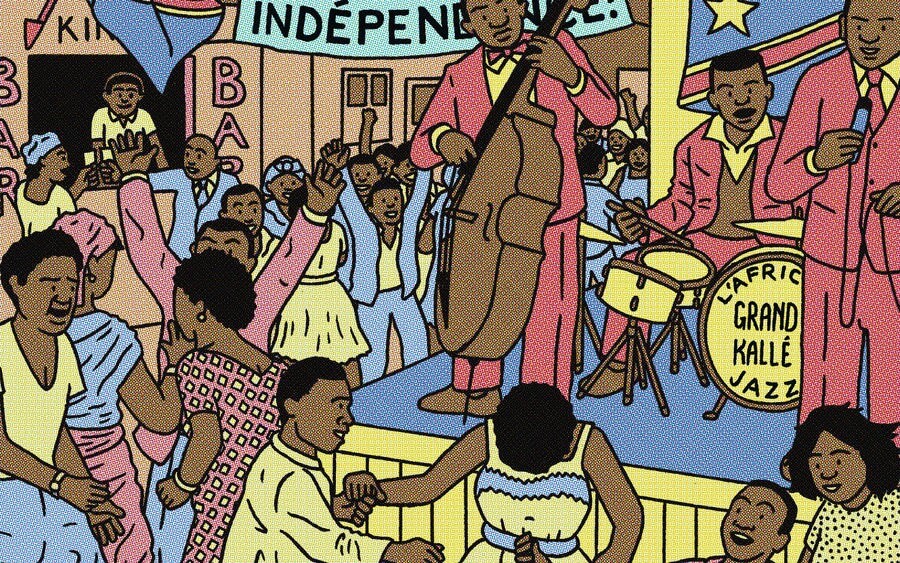Coming next week from Arsenal Press is Postcards from Congo, author and illustrator Edmund Trueman’s comprehensive graphic exploration of the history of Congo.
“The Democratic Republic of Congo, the second-largest country in Africa by area, has a fractured and bloody history, variously undone by decades of colonialism, civil war, corruption, and totalitarian rule. The country has played a crucial role in the economic growth of the Global North, but in doing so, has suffered immensely. So many seminal advances in technology were possible only through the extraction of materials from Congo, from rubber to copper to uranium to coltan. In each case, the Congolese people paid a great price exacerbated by the weight of colonial exploitation and dictatorial rule.
“In this comprehensive graphic history, author and illustrator Edmund Trueman explores the fractious story of Congo. Through deft illustrations and storytelling, Congo’s history — not widely known to Western readers — comes vividly alive. We see how Congolese musicians have spread their language across Africa by creating some of the most popular music on the continent, and how Congolese women have spent decades sidestepping sexist legislation to become leaders in local business. From resistance against colonialism to the fight for independence and the self-determination to make a life in an almost stateless place, Postcards from Congo depicts how the Congolese people have resisted and survived in order to take control of their lives and the country they call home.
“Includes a foreword by historian Didier Gondola, Professor of African History at John Hopkins University.”
Here, in a WWAC exclusive, Trueman shares the musical journey that supported his creation of Postcards from Congo in this Spotify playlist:
“One huge obstacle I faced when writing Postcards From Congo was that graphic novels are a silent medium, and it’s not possible to understand Congo without hearing its music. I would urge anyone interested in the book to have a listen to the sweet finger-picked melodies of Congolese Rumba (tracks 1 – 6), the soulful choruses of Soukous (tracks 8 – 10), the unstoppable rhythms of Ndombolo (tracks 11 – 13), the contemporary artists who blend Congolese music heritage with worldwide styles (tracks 15 – 17), and the hypnotic folk singing of the Mbuti people (tracks 7 and 14.)”


